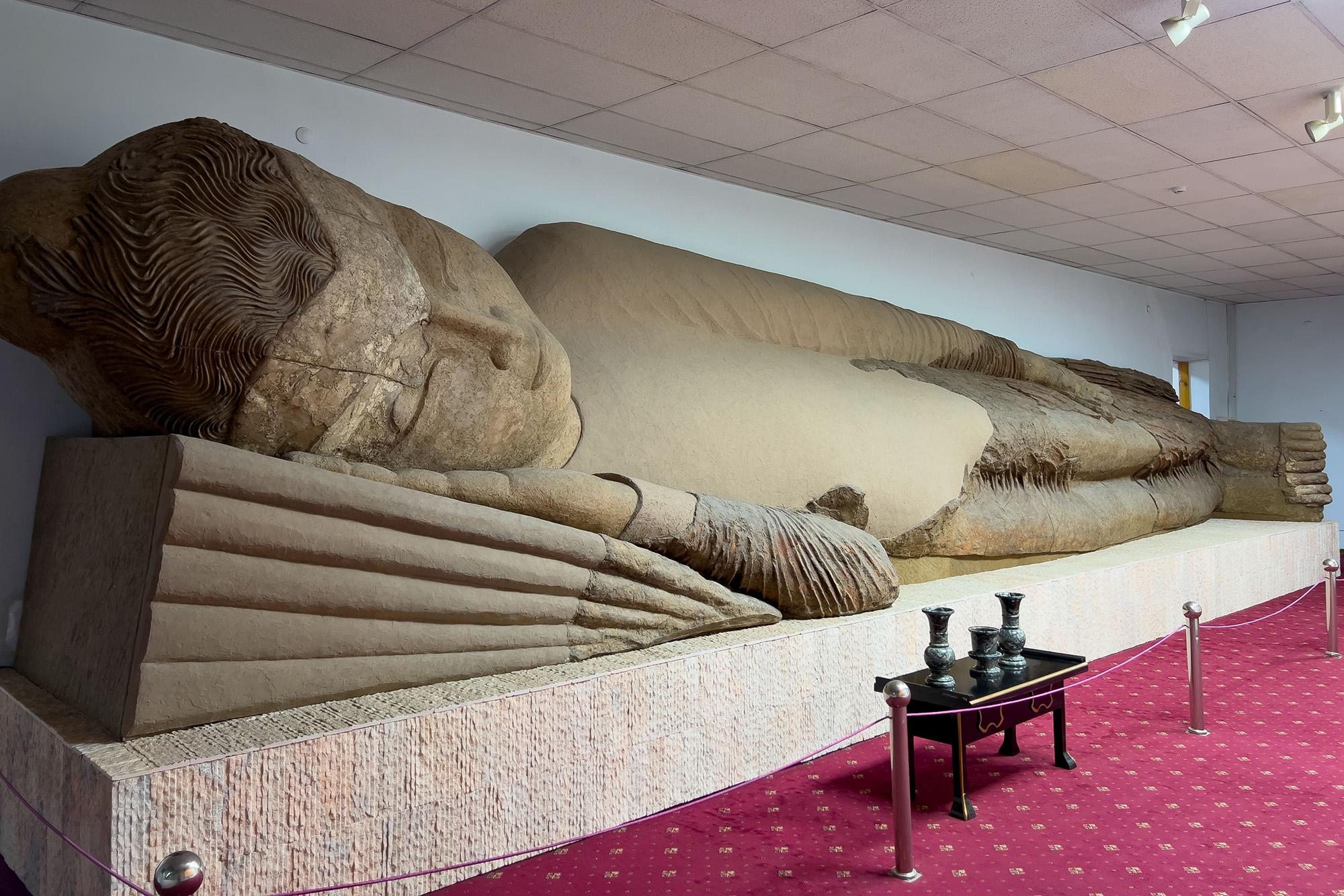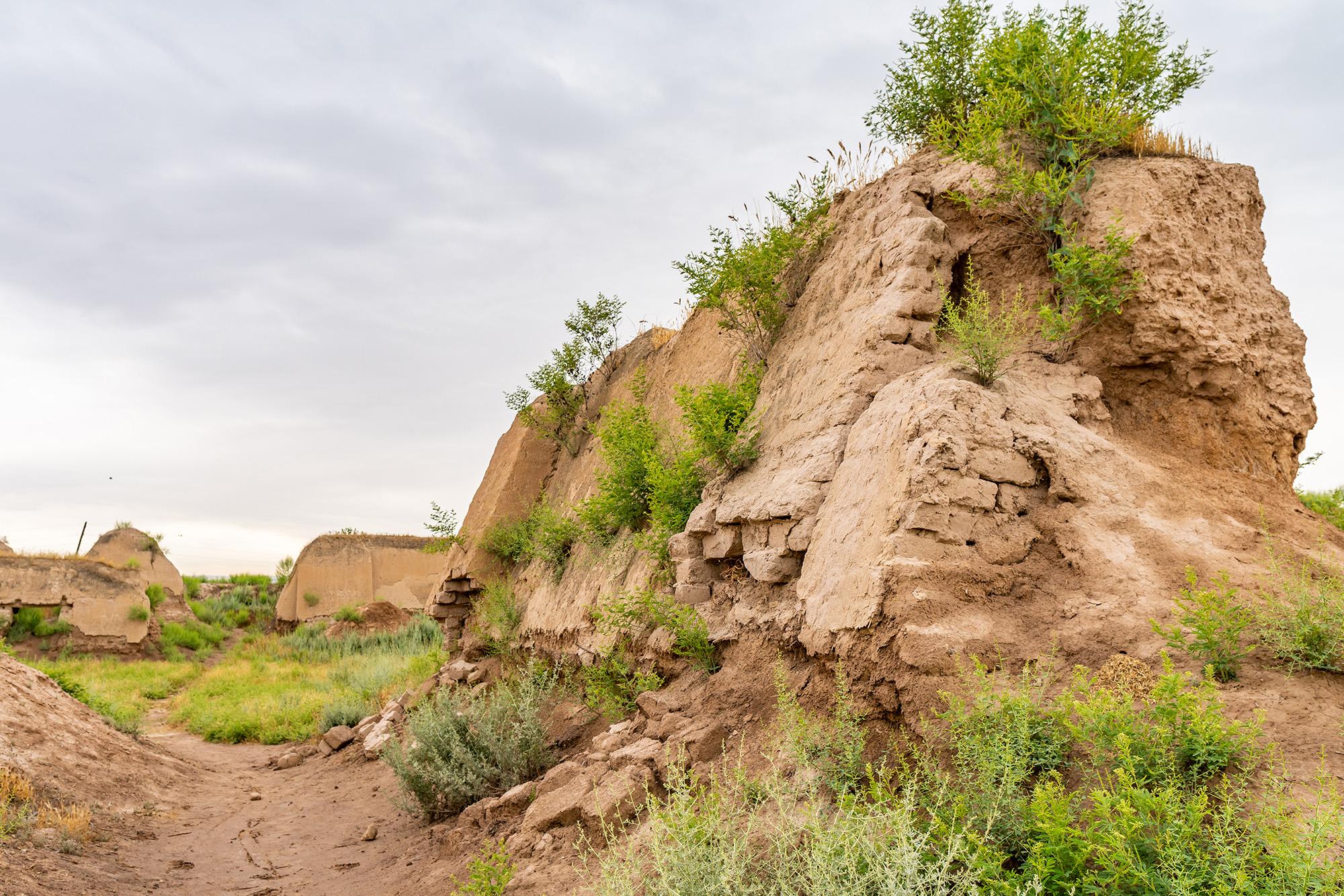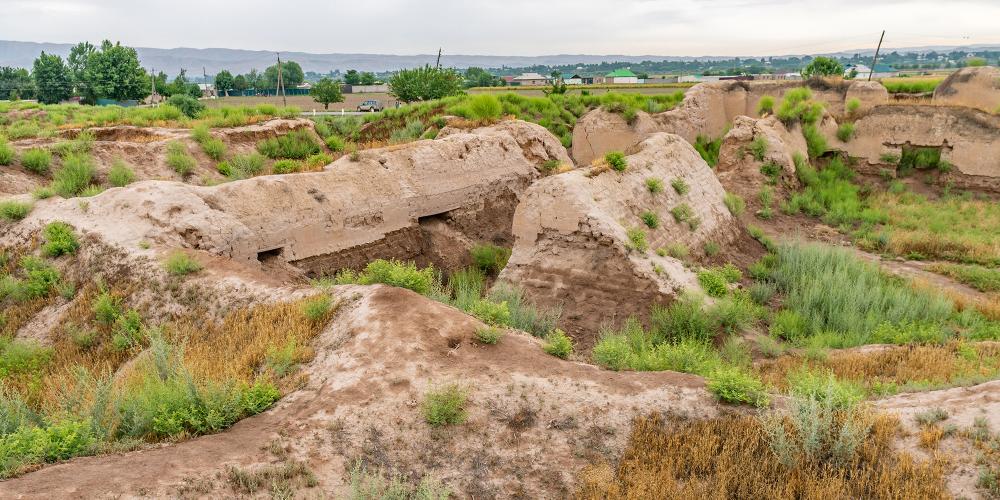Buddhistic cloister of Ajina-Tepa

Over the years, the Silk Road traded more than just goods across its vast network. Cultural and religious ideas were also shared along the routes, which is how Mahayana Buddhism reached Central Asia. It was this expansion of the faith that led to the founding of the Ajina-Tepa Buddhist cloister in the 7th century.
Although it was only inhabited for less than 200 years, some of Tajikistan's most important Buddhist artefacts have been found at the Ajina-Tepa Buddhist cloister. The most striking is a 12-metre-long statue of a sleeping Buddha that is now in the National Museum of Antiquities of Tajikistan in Dushanbe. But among the hundreds of other artworks discovered here are colourful wall murals, carved figurines, and large sculptures depicting Buddha in various positions.

When you visit today, there are enough of the original adobe brick (mudbrick) walls to get a sense of how the complex would have been laid out. There were two main sections – the temple and the monastery – both of which are designed with a central courtyard and halls on each side. In the temple half, the courtyard was dominated by a large six-metre-high stupa, while rooms on the sides were used for religious ceremonies. In the monastery half, the rooms on the side were mainly dormitories or meeting areas.

In use over the 7th and 8th centuries, Ajina-Tepa would have been a busy religious centre, decorated with colourful paintings and a base for the spread of the religion in the region. It's unusual to see such a well-preserved early Buddhist site in this part of Central Asia, which is one of the reasons it has been included on the Tentative List for possible consideration as a World Heritage Property.

